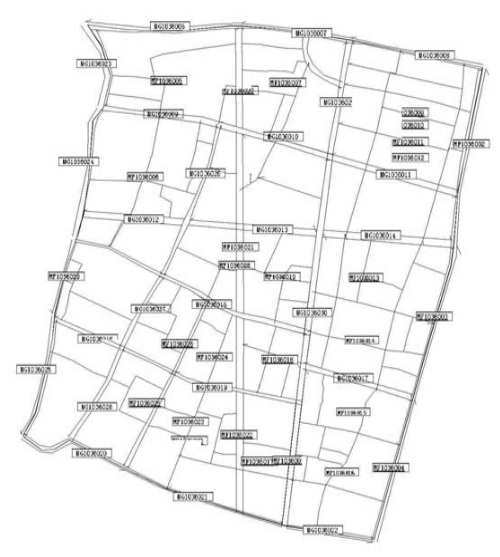城市形态研究•丁沃沃 赵辰 萧红颜
课程类型:必修
学时学分:36学时/2学分
城市形态认知课程大纲
第一周.序言 概念、方法及成果(萧)
第二周.讲座一 城市形态认知的历史基础——营造观念与技术传承(萧)
第三周.讲座二 城市形态认知的历史基础——图文并置与意象构建(萧)
第四周.讲座三 城市形态认知的理论基础——价值判断与空间生产(萧)
第五周.讲座四 城市形态认知的理论基础——勾沉呈现与特征形塑(萧)
第六周.讲座五 历史城市的肌理研究(赵)
第七周.讲座六 整体与局部:建筑与城市(赵)
第八周.讨论
第九周.讲座七 城市化与城市形态(丁)
第十周.讲座八 城市乌托邦(丁)
第十一周.讲座九 走出乌托邦(丁)
第十二周.讲座十 重新认识城市(丁)
第十三周.讲座十一 城市设计背景(丁)
第十四周.讲座十二 城市设计实践(丁)
第十五周.讲座十三 城市设计理论(丁)
第十六周.讲评
课程要求
1.要求学生基于对历史性城市形态的认知分析,加深对中西方城市理论与历史的理解。
2.要求学生基于历史性城市地段的形态分析,提高对中西方城市空间特质及相关理论的认知能力。
教学及考核方式
1.本课程以课堂教学为主,结合讨论。
2.课程结束后,提交课程作业。
3.以提交课程作业为依据评定成绩。
Outline of the course of Urban Morphological cognition
Week 1 Preface—concepts,methods and results(Xiao)
Week 2 Lecture 1 Historical basis of urban form cognition—Developing concepts and passing of technologies(Xiao)
Week 3 Lecture 2 Historical basis of urban form cognition—Apposition of pictures and text and imago construction(Xiao)
Week 4 Lecture 3 Theoretical basis of urban form cognition—Value judgement and space pr oduction(Xiao)
Week 5 Lecture 4 Theoretical basis of urban form cognition—history representation and feature shaping(Xiao)
Week 6 Lecture 5 Study on the grain of historical cities(Zhao)
Week 7 Lecture 6 Whole and part:Architecture and Urban(Zhao)
Week 8 Discussion
Week 9 Lecture 7 Urbanization and urban form(Ding)
Week 10 Lecture 8 Urban Utopia(Ding)
Week 11 Lecture 9 Walk out of Utopia(Ding)
Week 12 lecture 10 Have a new look of the city(Ding)
Week 13 Lecture 11 Background of urban design(Ding)
Week 14 Lecture 12 Practice urban of design(Ding)
Week 15 lecture 13 Theory of urban design(Ding)
Week 16 Discussions(Ding)
Course Requirement
1.To require students to cognitivly analysis basing on the historic urban form,deepen the understanding of Chinese and Western urban theory and history.
2.To require students tomorphologically analysis basing on the historic city of lots,to improve the cognitive abilities of characteristics of Chinese and Western urban space.
Teaching and assessment methods
1 This course is classroom-based,with discussion.
2 At the end of the course,submit course work.
3 The assessment results is based on the course work.
设定:城市街景认知与图示方法研究
媒介:动态影像
方法:
1.信息采集(2天)
a.车行道 乘坐公共汽车或出租车向道路前方拍摄,可双向多拍摄几次,以能客观统一反映所要提取要素为好。
b.人行道 视点设定在一米六左右(每小组统一),按人行速度(一般5km/h)匀速向前方直线前行与拍摄。最好能将相机固定在自行车上保持画面平稳。像素不限,以能辨识所要提取要素为准。
2.切片与分析(5天)
a.切片 去除偶然因素,在匀速运行的前提下,各小组统一设定切片原则,如每隔3秒切一张。每人在切片表格中(平面图部分)绘制出运动轨迹、方向以及提取切片的大概位置,并对各点进行编号,编号规则为姓名缩写+01,02,03……如单涛ST01,ST02,ST03……(请各自检索是否会与其他同学重复,如有重复状况,自行在姓名后加A,B等,如STA01,STA02,STA03……
b.切片校准与数据提取方法 针对同一小组所采集的切片,需进行统一焦段、统一灭点与地平线位置以及统一信息提取区域的校准;针对小组讨论后决定的主要提取要素(如绿化、广告、建筑界面形式、空间轮廓、天空轮廓线、人、车、信息牌、坐椅等,数量不限),各小组统一对有效区域内信息的提取方法,如栅格法、pline描边面积法、色彩提取法、计点法、数数法等。
c.信息提取 小组统一设计表格参数与形式(文件中紫红色部分为可调节部分),对各提取要素做数值统计。统计前,应保证小组所有原则的一致性,如有效区域的像素大小等。
*特别说明 小组设定的各项统一原则直接决定了第三步图示的有效性。
3.图示(7天)
a.数据汇总 小组成员以excel的方式将切片中提取到的信息进行汇总,每项信息对应编号。
b.图示 将汇总后的数据对应编号的平面位置,以图示的方式表达在分组总平面上,形式不限。要求至少每两人递交一张总图图示,可以用不同的方法表达同一个要素,也可以是不同要素的层级。必须以总图的形式呈现,另外可增加其他说明性图示。
c.图示说明 要求文字说明总图图示时遵循的原则;说明图示后显现出的地块特点与问题。
作业场地 Site of Job

Study on Urban Morphology•Ding Wowo,Zhao Chen,Xiao Hongyan
Type:Required Course
Study Period and Credits:36 hours/2 credits
信息采集 切片与分析 Information Collection Slices analysis

信息采集 切片与分析 Information Collection Slices analysis

第五组图示 Icon of Team Five

第三组图示 Icon of Team Three

Setting:Cognition of City Street & Study on Graphic Method,
Media:Video
Method:
1.Information Collection(2 days)
a.Roadways Take a bus or taxi,shoot twoway in front of the road a few times,better to have a unified response to the objective elements to be extracted.
b.Sidewalk Set view point 160 centmetres in front of the sidewalk,move forward shooting at a uniform velocity according to the speed of pedestrians . Let the camera fixed on the bicycle frame to maintain smooth.
2.Slices and Analysis(5 days)
a.Slice Remove causal factors,operating under the premise of the uniform speed of every team,such as a cut every four seconds.
Each table in the slice includes the trajectory,direction,and the approximate location of slice location,and each point numbered rules initials+01,02,03 ... such as Shan Tao ST01,ST02,ST03 ...
b.Calibration and Data Eextraction Section The same group of slices collected need a unified focal lengths,uniform vanishing points and horizon position,and a unified information extraction area calibration;According to the result of discussion of the main extracted factors,the team must have unified extraction methods within the information of the effective region,such as the grid method,pline stroke area method,color extraction,namely point method,counting method.
c.Information Extraction Teams uniform design table parameters and form . Do statistics of the value of the extracted elements,before statistics,make ensure the consistency of all the principles of groups,such as the effective area of the pixel size.
3.Shows(7 days)
a.Data Collection Team members to extract summary information in the slice with excel.
b.Icon Expression the data after summary with icon in the subgroup of the general plane.
Tcorresponding to the number of the plane location,form is not restricted.
c.Illustrate Explain with text according to the principles of general plane ; explain what the icon shown on plot characteristics and problems.
免责声明:以上内容源自网络,版权归原作者所有,如有侵犯您的原创版权请告知,我们将尽快删除相关内容。
















